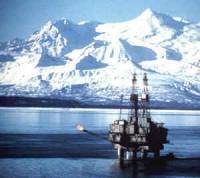 By now, most of us have heard about how oil and gas drilling does a number on ecosystems. But it’s no good for people, either. By way of the British Columbia online magazine the Tyee comes the story of Nuiqsut, a coastal community of 523 people in northern Alaska, about 100 miles west of the Arctic National Wildlife Refuge.
By now, most of us have heard about how oil and gas drilling does a number on ecosystems. But it’s no good for people, either. By way of the British Columbia online magazine the Tyee comes the story of Nuiqsut, a coastal community of 523 people in northern Alaska, about 100 miles west of the Arctic National Wildlife Refuge.
Back in the late ’90s, the oil and gas companies wooed the local Inupiat tribe with promises of jobs and minimal environmental impact—just 14 acres of tribal land would be affected by offshore and land drilling, they said. But now, 14 looks more like 500, and the community is a whole lot worse for the wear, says Rosemary Ahtuangaruak, mayor of Nuiqsut and also a health-care worker:
Since 1986, when she first started working in the health field, the number of people needing medical help to breathe has risen dramatically.
Nuiqsut is 15 metres above sea level on the tundra, and Ahtuangaruak says she can see the natural gas flares from the clinic. The nights when they light up the sky are the same nights she, and other medical staff, can’t leave the clinic for helping people with inhalers, nebulizers, steroids and antibiotics.
The chemicals used in oil and gas extraction, it seems, can irritate the lungs and cause a bunch of other nasty health problems, too.
The other thing about drilling: It’s really noisy. Booms as loud as a jet takeoff have scared Nuiqsut’s whales and caribou off, so along with their health, local people are losing their livelihood.
The Canadian government is currently trying to ignore an offshore-drilling moratorium enacted 34 years ago. What can coastal communities expect if officials succeed in wishing away the moratorium? Nuiqsut’s hard times are probably a pretty good indication.








